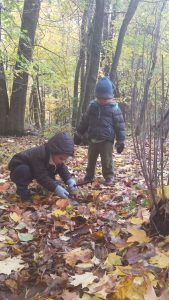
Photo Credit: Patricia Espedal
Many educators and parents express concern and even criticism over the usage of external rewards when teaching children. Some claim that the use of these rewards will stifle a child from developing intrinsic motivation.
The Science of Behavior has much to offer in this area but it doesn’t always speak the same language as the rest of the world. The challenge is to relay the research and technology of behavior in a way that others can understand and apply.
Intrinsic motivation describes behavior that is driven by internal rewards; there is some sense of personal pleasure gained that isn’t dependent on an external outcome. A Behavior Analysts might conceptualize this as a behavior that is automatically reinforced; meaning the function of behavior is not occurring in order to gain a tangible reward, escape something unpleasant or gain attention from others but rather because it feels good.
Most human behavior does not occur solely for one purpose; behavior is complex and often has multiple functions at the same time. For example, a child might read a book at school partially because they are enjoying that activity (intrinsic/automatic) and partially to avoid getting reprimanded from the teacher (negative reinf orcement/avoiding aversive consequences) and partially to receive a good grade (positive reinforcement).
orcement/avoiding aversive consequences) and partially to receive a good grade (positive reinforcement).
There are many findings in Behavioral Science that can be applied to learning and education to foster motivation which is not dependent upon external rewards. B.F. Skinner, the father of Behavior Analysis said, “We shouldn’t teach great books; we should teach a love of reading. Knowing the contents of a few works of literature is a trivial achievement. Being inclined to go on reading is a great achievement.”
So how do we teach children to love learning? Well, consider the difference between your boss giving you a specific assignment to create a report on the financial health of the company; or your boss telling you to choose a topic to write a report about something that excites you. Which presentation would you have more intrinsic motivation to complete? Chances are, if you are given a work assignment that doesn’t happen to excite or interest you; you will still complete that assignment but it will not be coming from a source of automatic / intrinsic motivation. You might complete the assignment to gain financial rewards, social recognition and avoid job loss and social shame.
Using rewards (reinforcement) to motivate and shape behavior happens all the time, even when we aren’t aware of it – it is a fundamental part of human behavior. Most people would not continue going to work if they weren’t getting paid; and when teaching a new skill, sometimes contriving motivation with rewards is necessary. However, Behavior Analysts are always working towards fading artificial rewards and creating motivation that will be natural to its environment and sustainable over time. The goal is to shape the environment to support the behaviors we want to encourage; including independent, self-initiated learning.
The key to creating intrinsic motivation is choice.
The behavioral research on choice is extensive. Not only does offering choice increase on-task behavior (i.e., more work is done) but it also has been shown to decrease problem behaviors. When you are given a choice between tasks, it decreases your desire to avoid or escape those tasks.
Simply giving someone a choice decreases the power struggle and creates a better outcome.
So, if offering children choices will increase their engagement, rate of learning, and retention while also decreasing problem behaviors then why aren’t we doing it more in education?
There is a growing movement in education called child-led learning. The idea behind this approach is to give the child the opportunity to decide what to learn while the adults work to create an environment to support and guide learning. There are varying levels of how this approach is applied and how much control the child is given. Two examples of child-led learning methods are unschooling (propelled by the writings of John Holt) and Montessori (founded by Maria Montessori). Both give the child varying levels of freedom to make choices about how and what they learn (unschooling has very little structure while Montessori has a set method).
Behavior Analysts also utilize the child-led approach through Natural Environment Teaching where they provide individual instructions to a child in a natural setting (i.e., not sitting at a desk or table). Natural Environment Teaching focuses on following the child’s motivation to create learning opportunities as they come up naturally.
The current structure of public schools does not have much flexibility for student choice or self-initiated learning perhaps because they are required to follow a set curriculum and meet testing criteria. A learning environment structured around getting gold stars and good grades and avoiding failing a test will produce a certain outcome for students. If educators want to encourage students to develop a love for learning without the reliance on those tangible rewards then a major re-structuring is needed. Although Behavior Analysts do have a presence in schools, there is huge potential for the field to expand its scope by creating enriching, educational environments outside of the mainstream. Skinner shared his vision of how society could be re-structured away from coercion and control by creating contingencies that support human curiosity and motivation (Walden Two). The science of behavior is a critical tool for the next step of our human evolution.

Photo Credit: Patricia Espedal
Understanding the principles of behavior can help us understand motivation and reinforcement. Babies naturally learn to crawl, walk and investigate their world without an adult handing out external rewards. They have an instinctual curiosity about their environment. There are many ways to create enriched environments of learning to continue that pattern as children grow. One step towards that vision is offering more choice when it comes to what and how a student learns.
Behavior Analysts are trained to identify motivation and environmental factors that influence learning which are both essential skills when designing environments to promote self-initiated learning. Behavioral Science can contribute to the growing field of child-led learning by promoting choice as well as using the principles of behavior to design enriched environments that encourage an intrinsic/automatic love of learning.
References:
Bambara, L., Ager, C., & Koger, F. (1994). The effects of choice and task preference on the work performance of adults with severe disabilities. Journal of Applied Behavior Analysis, 27, 555–556.
Cooper, J. O., Heron, T. E., & Heward, W. L. (2007). Applied behavior analysis (2nd ed.). Upper Saddle River, NJ: Merrill/Prentice Hall.
Dunlap, G., dePerczel, M., Clarke, S., Wilson, D., Wright, S., White, R., et al. (1994). Choice making to promote adaptive behavior for students with emotional and behavioral challenges. Journal of Applied Behavior Analysis, 27, 505–518.
Evans, R.I. B.F. Skinner: The Man and His Ideas. New York, Dutton, 1968
Kern, L., Mantegna, M. E., Vorndran, C. M., Bailin, D., & Hilt, A. (2001). Choice of task sequence to reduce problem behaviors. Journal of Positive Behavior Interventions, 3, 3–10.
McComas, J., Hoch, H., Paone, D., & El-Roy, D. (2000). Escape behavior during academic tasks: A preliminary analysis of idiosyncratic establishing operations. Journal of Applied Behavior Analysis, 33, 479–493.
Parsons, M. B., Reid, D. H., Reynolds, J., & Bumgarner, M. (1990). Effects of chosen versus assigned jobs on the work performance of persons with severe handicaps. Journal of Applied Behavior Analysis, 23, 253–258.
Skinner B.F. Walden two. New York: Macmillan; 1948.
Skinner B.F. Beyond freedom and dignity. New York: Knopf; 1971b.
Tasky, K.K., Rudrud, E.H., Schulze, K.A., & Rapp, J.T. (2008). Using choice to increase on-task behavior in individuals with traumatic brain injury. Journal of Applied Behavior Analysis, 41, 261-265.
Vaughn, B. J., & Horner, R. H. (1997). Identifying instructional tasks that occasion problem behaviors and assessing the effects of student versus teacher choice among these tasks. Journal of Applied Behavior Analysis, 30, 299–312.
